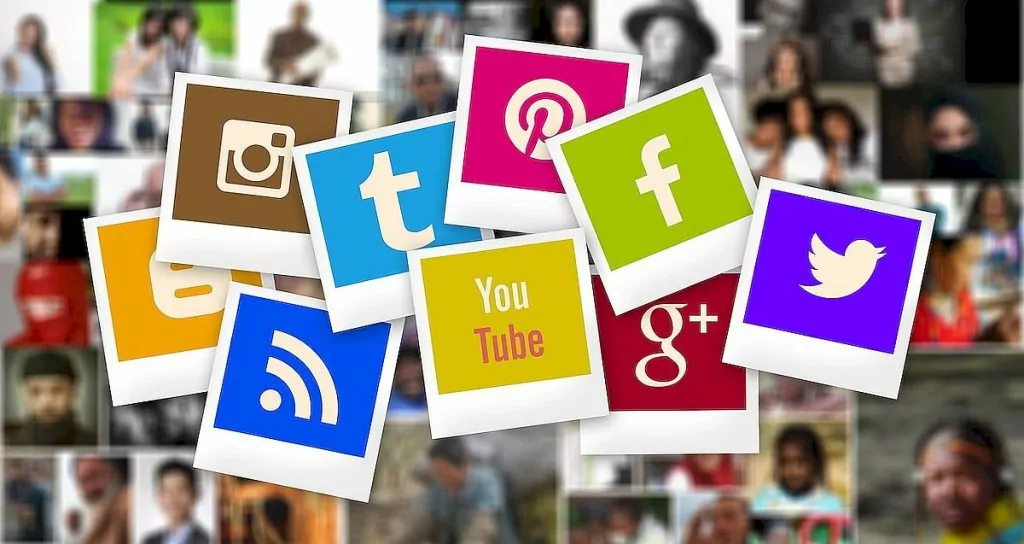Recently, the 2022 version of the report "Swedes and the Internet" was released by the Swedish Internet Foundation. This report is always interesting to us, who work with a digital magazine and social media. We present some excerpts from the report, as well as our thoughts on this.
Table of contents
How many people use the internet?
First and foremost, the report (which you can read in its entirety here) figures on how many people use the internet out of the population aged 16 and over. This is a very large proportion of the population, but not everyone. Here it is relevant to reflect on the digital exclusion of those who cannot access news, book medical appointments, arrange travel/transportation or communicate with authorities online.
- 94 % of the population uses the internet
- 8 out of 10 pensioners use the internet

How do we use the internet?
The report also tells us how we use the internet. Among other things, it is clear that the use of e-identification - especially bank ID - has increased, which is a positive development. We ourselves do not use bank ID on a daily basis (as many people apparently do), but we would experience major problems without it.
Use of e-identification
- 9 out of 10 use e-identification
- 7 out of 10 use mobile bank ID daily
- 3 out of 10 pensioners have not used bank ID
Use of digital health services
- 83 % have used e-health services in the last year
- 1 in 4 have had a digital doctor's appointment in the last year
Use of digital travel services
- 57 % uses e-services for travelling by public transport
- 50 % has travelled with a digital ticket on a mobile phone
- More than 6 in 10 have paid for parking with an app

What limits our use of the internet?
What limits our use of technology is different in different age groups, according to the report.
Half are limited by insecurity
Half of internet users avoid doing certain things online because of insecurity. These include fear of chatting with strangers, fear of fraud in e-commerce and concern about not knowing which news is true and which is not.
Pensioners limited by technology
The older group of users are mainly limited by technology. For example, they may have difficulty understanding cloud storage, error messages and technical terms. Those born in the 1920s and 1930s are also slightly more likely than others to feel that costs can be limiting, such as not being able to afford a smartphone.
Younger users want to protect their privacy
The younger half of the population is more concerned than others about protecting their privacy online. For example, more than half click out their location information on their mobile phones. Younger people are also more likely to disable cookies on websites they visit.
Men are more likely to opt out of social media
Men (23%) are significantly more likely to refrain from using social media altogether than women (13%). However, women are more likely than men to refrain from expressing their opinions on social media.

How do we shop online?
E-commerce has become the norm for a large part of the population, and perhaps this was given an extra boost during the pandemic, as people did not want to be in too many crowds.
- 85 % of the population have shopped online in the last year
- 3 in 10 people born in the 1920s and 1930s have shopped online this year
- Clothing and gifts are the most popular items to buy online

How many people are victims of online fraud?
But shouldn't you be worried about doing business online? According to the report, many people are affected by online fraud, but it seems to be mainly related to scam emails and text messages.
We can tell you ourselves that we received such a text message last autumn. It was so relevant that we fell for it (we were waiting for a package and the text message seemed to come from the package provider), but we realised the error soon afterwards and blocked our card before anything happened.
- 6 out of 10 internet users have been victims of online fraud in the last year.
- The most common scam is a scam email or text message.
- 2 % of internet users have been exposed to online threats

How do we use social media?
As many as 84% of internet users use social media. Both women and men use social media, but there are some differences. Men are more likely to use Youtube, Twitter, Reddit and Twitch. Women are more likely to use Instagram and Pinterest. Women are also more likely to post their own material.
- YouTube is used by all generations, although it is most popular with younger people. The purpose is often to watch entertainment, listen to music or watch instructional films. Use has slightly decreased.
- Facebook is used by more than half of internet users. Among people born in the 1980s or earlier, Facebook is the most commonly used platform on a daily basis. Many use Facebook to wish people a happy birthday or to participate in groups.
- Instagram is used by all generations, and is particularly popular with people born in the 80s, 90s or 00s. They look at posts and stories, and post their own material.
- LinkedIn is mainly used by people aged 32-62, with a particularly high level of use among professionals. Most people read posts in the feed and around 3 in 10 promote their professional self.
- Snapchat, Tiktok and Roblox is mainly used by the younger generations. Snapchat is used to snap/chat with people you know and TikTok to watch videos.
There are no major surprises in the report, and it seems that the use of social media is relatively unchanged.

What is your relationship with the internet?
What is your relationship with the internet? Do you use e-identification, digital health services or digital travel services? Do you think about your privacy? Do you shop online? Do you use social media?

The images in this article are from the Pixabay image bank.


















BP says:
So I'm a relatively 'ordinary' internet user, without being the least bit technically gifted.
Or today I went to swap money and the app had disappeared on my iPhone. Yes, yes, it worked out.
Unfortunately, scam emails and text messages are part of everyday life, but 99.9 per cent of the emails end up in the spam folder. Then again, I only have a blog and no Insta, Facebook or other platforms so...
19 October 2022 - 20:25
Helena says:
We are also relatively "ordinary" I think, although we may use social media a bit more. I agree that scam emails are commonplace. Unfortunately, I think they have become more professional, and thus sometimes a little harder to see through.
20 October 2022 - 18:32